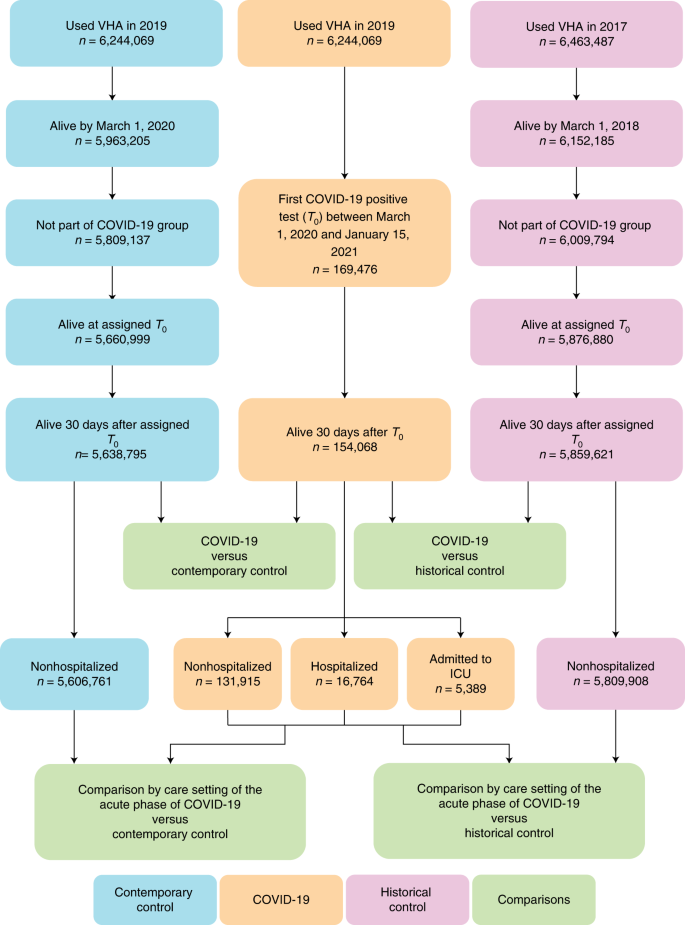感染後1年以内に発症する問題としては、脳卒中、発作、記憶障害、運動障害などがあります。 Strokes, seizures, memory and movement disorders among problems that develop in first year after infection
2022-09-22 ワシントン大学セントルイス
COVID後の脳は、震えや不随意筋収縮からてんかん発作に至る運動障害、聴覚や視覚の異常、バランスと協調性の障害、その他パーキンソン病で経験するのと同様の症状と関連している。
集中治療室に入院した患者を含む非入院患者と入院患者の両方で、44の脳およびその他の神経学的障害を評価した。その結果、COVID-19の壊滅的な長期作用が明らかになった。
研究チームは、2020年3月1日から2021年1月15日までのいずれかの時期にCOVID-19の検査で陽性となり、感染後30日間生存していた154,000人の管理データセットを作成した。統計モデリングを用いて、COVID-19データセットの神経学的転帰を、ウイルスに感染していない他の2つのグループと比較しました:同じ期間にCOVID-19に感染しなかった560万人以上の患者からなる対照群、およびウイルスが世界中で何百万人にも感染して死亡するずっと前の、2018年3月から2019年12月31日までの580万人以上からなる対照群。
研究者たちは、1年間にわたり脳の健康状態を調査した。COVID-19に感染している人は、感染していない人に比べて7%多く神経症状が発生していた。この割合を米国内のCOVID-19感染者数から推定すると、約660万人がウイルスに関連した脳の障害に悩まされていることになる。
対照群の人々と比較して、ウイルスに感染した人々は、記憶障害を発症するリスクが77%増加した。
全体として、非感染者と比較して、COVID-19に感染している人は、てんかんや発作に苦しむ可能性が80%高く、不安やうつなどの精神障害を発症する可能性が43%高く、軽度から重度の頭痛を経験する可能性が35%高く、運動障害を発症する可能性が42%高いことが分かった。後者には、不随意筋収縮、震え、その他のパーキンソン病のような症状が含まれる。
また、COVID-19に感染している人は、目のかすみや乾燥、網膜の炎症などの目の問題を抱える可能性が30%高く、耳鳴りなどの聴覚異常を発症する可能性も22%高いことが判明した。
<関連情報>
- https://source.wustl.edu/2022/09/covid-19-infections-increase-risk-of-long-term-brain-problems/
- https://www.nature.com/articles/s41591-022-02001-z
COVID-19の長期的な神経学的転帰について Long-term neurologic outcomes of COVID-19
Evan Xu,Yan Xie & Ziyad Al-Aly
Nature Medicine Published:22 September 2022
DOI:https://doi.org/10.1038/s41591-022-02001-z

Abstract
The neurologic manifestations of acute COVID-19 are well characterized, but a comprehensive evaluation of postacute neurologic sequelae at 1 year has not been undertaken. Here we use the national healthcare databases of the US Department of Veterans Affairs to build a cohort of 154,068 individuals with COVID-19, 5,638,795 contemporary controls and 5,859,621 historical controls; we use inverse probability weighting to balance the cohorts, and estimate risks and burdens of incident neurologic disorders at 12 months following acute SARS-CoV-2 infection. Our results show that in the postacute phase of COVID-19, there was increased risk of an array of incident neurologic sequelae including ischemic and hemorrhagic stroke, cognition and memory disorders, peripheral nervous system disorders, episodic disorders (for example, migraine and seizures), extrapyramidal and movement disorders, mental health disorders, musculoskeletal disorders, sensory disorders, Guillain–Barré syndrome, and encephalitis or encephalopathy. We estimated that the hazard ratio of any neurologic sequela was 1.42 (95% confidence intervals 1.38, 1.47) and burden 70.69 (95% confidence intervals 63.54, 78.01) per 1,000 persons at 12 months. The risks and burdens were elevated even in people who did not require hospitalization during acute COVID-19. Limitations include a cohort comprising mostly White males. Taken together, our results provide evidence of increased risk of long-term neurologic disorders in people who had COVID-19.


